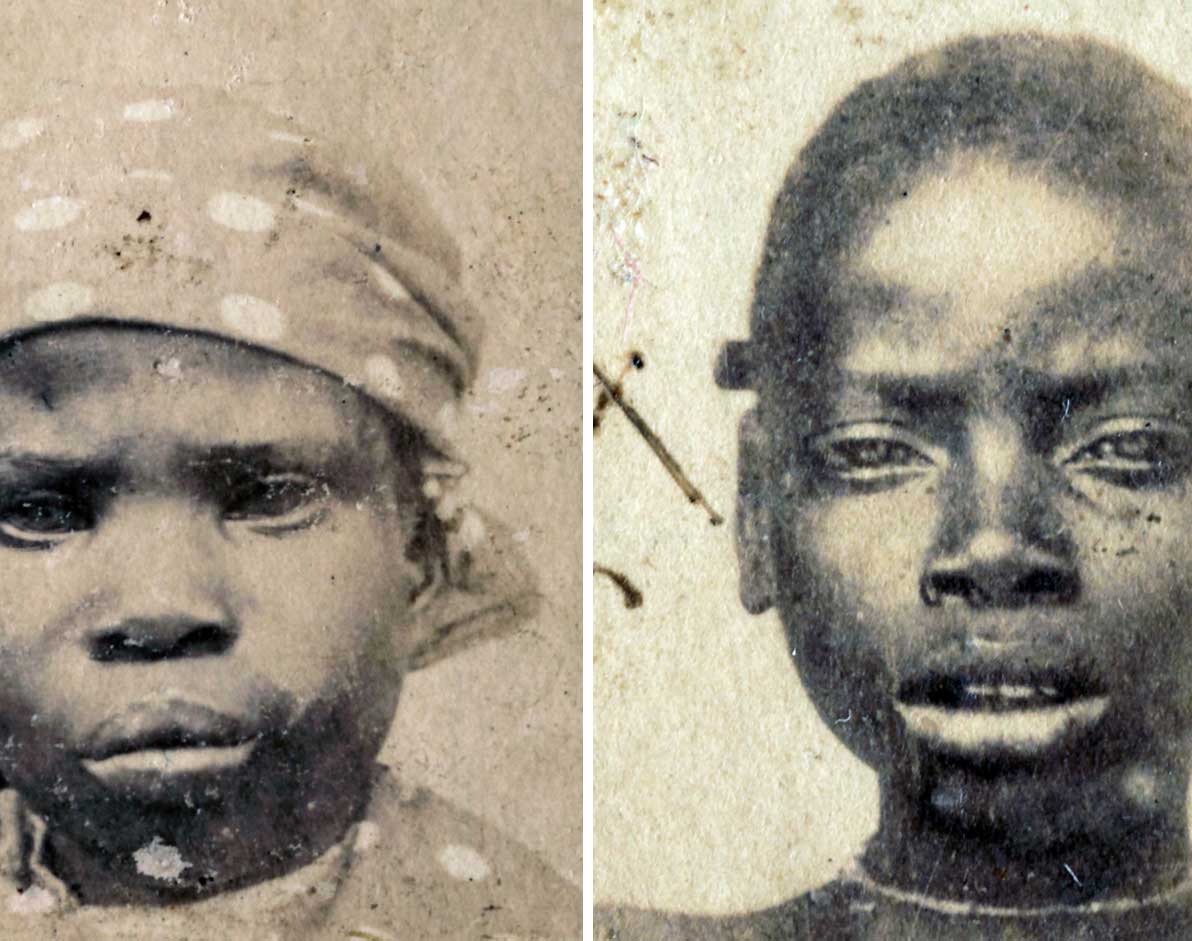The military also employed photography to document people who were forcibly migrated. These photographs of “Liberated Africans” were taken after they were freed from slaving ships by the British Navy. From 1861 to 1874, the Columbine transported more than 2500 “Liberated Africans” to Port Victoria, Seychelles. While trade continued across eastern and southern Africa and the Indian Ocean, the British Navy fleet pursued slaver ships as part of a lucrative exchange. The "liberated" were taken to a depot, classified by the District Magistrate, photographed, renamed, and assigned as "apprentices" to the French-owned plantations, where they were indentured for five years.
Bureaucratic photographs, such as those of the “liberated" people seen here, can codify and distance viewers from the depicted people as individuals, but such images are complex records of identity and control. Each person was assigned a foreign English name to replace his or her own, yet records also carefully log parental names. These early photographs are fragments that together form an essential narrative about migration, and they provide a valuable record of individuals who existed under harsh conditions. Ultimately, they defy and alter our expectations of what precisely constitutes a portrait.
[ close ]




















